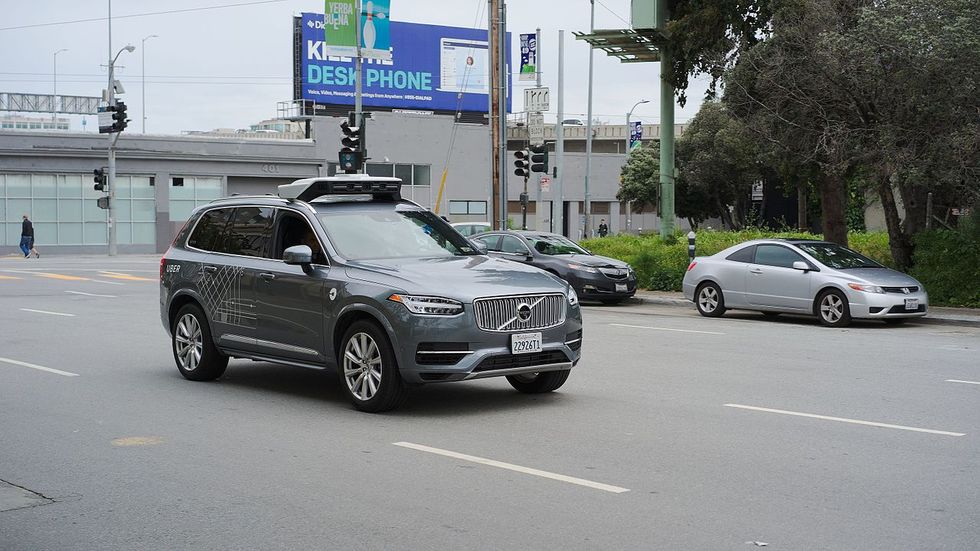For the first time in the history of autonomously operated vehicles, the inevitable finally happened…Sunday, March 18th -- a woman illegally jaywalking a dark road in Tempe, Arizona was fatally struck by an Uber robot car. Sound like some super cool robot vehicle, right? Well, it's not that kind of "Uber robot car." We are talking about the world renown alternative taxi company that has swept the nation like a windstorm.
These self-driving cars are jam-packed with advanced sensor coverage which consists of eight surround cameras to allow 360 degrees of visibility, a new onboard computer with over 40 times the usual processing power, and a plethora of standard safety features like automatic emergency brakes and a front collision warning.
Wouldn't you think all these features and specifications would be enough to keep the driver and those around safer on the street?
An unexpected turn of events late Sunday night
Wednesday, March 21st - Police released a video showing the occurrence from two different angles; one from the exterior view (dash cam) and the other from an interior view (of the driver).
Police in Tempe, Arizona released video following the accident
The video shows the victim of the accident, 49-year old Elaine Herzberg being struck by an Uber car in the self-driving mode that was piloted by designated back up safety driver, Rafaela Vasquez.
She appears to be walking her bike across the street illegally judging by the center median dividing the two lanes, but strangely enough, she was already halfway across the street where she was unfortunately hit at 40 mph by the car.
The driver who seems to be behind the wheel of the self-driving car, but is paying more attention to whatever is in her lap reacts frantically as she looks up right before impact where the video proceeds to end.
As the world's first self-driving fatalcar accident alarms society all over the world, Uber (the company responsible for these test vehicles) makes strides towards their number one priority: safety.
Autonomous car testing suspended following fatal accident
Monday, March 19th, 2018 - Uber put a pause on any further tests that were to be conducted in Arizona, San Francisco, Pittsburg, and Toronto. The four major cities that were undergoing tests are unsure of when the ride-sharing company Uber would bring these projects back to life.
“As we develop self-driving technology, safety is our primary concern every step of the way,” said Matt Kallman, an Uber spokesman. “We’re heartbroken by what happened this week, and our cars remain grounded. We continue to assist investigators in any way we can.”
Uber is holding off on reinstating their driverless vehicles until further information is found in regards to what caused the accident.
In Arizona, Governor Doug Ducey took a firm stance on this incident with statements like, "disturbing and alarming". [Phrase this differently, maybe say "describing it as"] Following the fatal pedestrian accident, the Governor stated in his letter to CEO Dara Khosrowshahi on March 26th, 2018, "improving Arizona's public safety has always been the emphasis of their approach to autonomous vehicle testing," and that the "incident that took place on March 18 is an unquestionable failure to comply with this expectation."
So what does this mean for what's to come in the self-driving automotive industry?
The future of automated vehicles
Right now, it's tough to say exactly what is going to happen for automated vehicles and ridesharing. One thing that's for sure is Uber is not going to proceed in attempting to obtain their permit to test self-driving cars in California anytime soon.
The DMV of California is preparing to begin issuing permits at the beginning of April to companies wishing to drive or test fully-automated vehicles on public roads without any real human safety drivers. Though this doesn't directly mean that the United States should prepare to see cars without any drivers popping up all over the country.
Following a question, a DMV spokesperson said, "The DMV is allowed to begin issuing driverless testing and/or deployment permits on April 2, but that doesn’t mean a manufacturer will meet the requirements or if we will approve them." With the self-driving initiative and the infancy of autonomous vehicles its difficult to say which car accident lawyer is going to be involved in this accident and incidents moving forward. The autonomous law is developing with time as things change. This could suggest a growth spurt of autonomous driving injury lawyers in the forthcoming.
The future of Uber's autonomous driving program hangs by a thin thread and this influx of bad news can only damage the ridesharing companies reputation. A good impression takes years to stick to people's mind's; a damaged reputation only takes one.

















